 0555-6768298
0555-6768298
 0555-6768298
0555-6768298
Если у вас есть вопросы или предложения, пожалуйста, оставьте нам сообщение, мы ответим вам, как только сможем!
Связаться с нами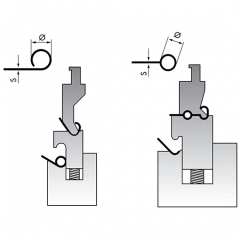
Преимущества Производство за два или три хода Уменьшение следов благодаря подпружиненному прижимному устройству Активные компоненты закалены Высокая повторяемость благодаря встроенному упору Функциональная проверка и регулировка посредством испытательных изгибов - с вашими образцами Подходит для материалов толщиной минимум до 4,0 мм внутренний Ø: 2,5 мм x толщина материала для стали и алюминия 3,0 мм x толщина материала для нержавеющей стали
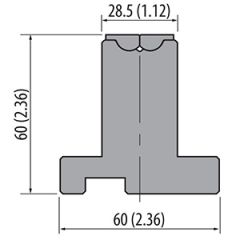
Пресс-тормозные штампы без царапин, лучше всего положить пленку на поверхность заготовки при сгибании. и мы порекомендуем вам подходящий размер матрицы Roll-V в зависимости от пластины, которую вы сгибаете.

Регулируемые плашки с регулировочными шайбами Регулируемые нижние плашки можно считать одним из самых универсальных дополнений к листогибочному прессу. С этим типом инструмента отверстия могут быть расположены от 6,35 мм до 381 мм. Для создания необходимого отверстия предусмотрены распорки. Прорези с прорезями позволяют легко снимать, чтобы изменить отверстие матрицы. Когда они не используются, распорки располагаются по бокам блока матрицы. Эти штампы могут быть цельными или секционными для удобства обращения.
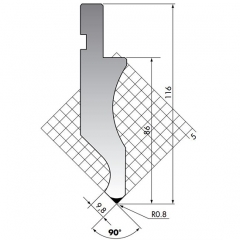
Прямой размер лезвия: 835*146*26 мм, 90 градусов. материал 42CrMo4, твердость HRC47+/-3
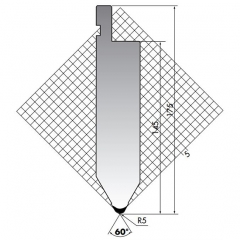
Прямой размер лезвия: 835*175*40 мм, 60 градусов. материал 42CrMo4, твердость HRC47+/-3

Прямой размер лезвия: 835*146*26 мм, 90 градусов. материал 42CrMo4, твердость HRC47+/-3

Прямой размер лезвия: 835*145*32 мм, 60 градусов. материал 42CrMo4, твердость HRC47+/-3
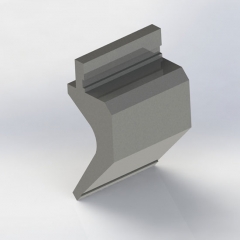
Размер перфоратора «гусиная шея»: 835*197*92 мм, 88 градусов. материал 42CrMo4, твердость HRC47+/-3. и высота 197мм, ширина 92мм. можно сделать по желанию заказчика.
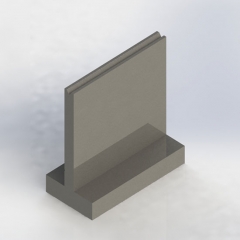
Размер матрицы телевизора: 835*120*60 мм, V12, 30 градусов. материал 42CrMo4, твердость HRC52-58. и V6,V8,V10,V16,V20,V25 могут быть изготовлены по запросу заказчика.
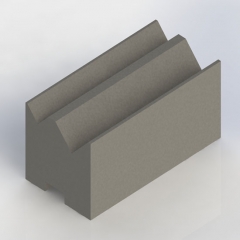
Самоцентрирующиеся штампы 2V, размер 835*46*50 мм, 88 градусов, вес 17 кг. Мы можем изготовить V5-V9, V8-V12, V12-V20, V16-V25 и другие V-образные отверстия в соответствии с толщиной изгиба.
What is the best material for press brake tooling?
In the field of sheet metal fabrication, the material selection of press brake tools directly determines its wear resistance, service life, and forming accuracy. To ensure production efficiency and product quality, it is especially important to choose tooling materials scientifically. However, with so many material options available on the market, customers are often confused when making a decision. So, how can one choose the "best" tooling material? This article will explore the topic from four key perspectives.
Based on Sheet Material Type
Different sheet materials require different tooling materials. The most commonly used press brake Moulds materials on the market include 42CrMo, T8/T10, H13, and SKD11/D2. Among them, high-strength and tough alloy steels like 42CrMo are sufficient for most general bending tasks. However, for materials such as stainless steel, which have higher strength and springback, harder and more wear-resistant tooling materials like SKD11 or H13 are more suitable.
Based on production volume and usage frequency
For long-running production lines or high-frequency operations, it's wise to use more wear-resistant materials like H13 or SKD11. While these come at a higher upfront cost, they significantly reduce downtime and tooling replacement. For short runs or occasional use, 42CrMo offers a great balance of performance and affordability.
Based on precision requirements
High-precision sheet metal parts often require higher hardness and stability from the tooling. In such cases, it is recommended to use high-hardness materials like SKD11 to prevent deformation and maintain consistent bending angles over time. Tooling with lower hardness is more likely to wear out or deform with prolonged use, which can negatively impact product accuracy.
Based on Cost
In general, high-quality tooling materials tend to be more expensive, but they offer a longer service life and require less maintenance. In the long run, despite the higher initial investment, the overall cost of use is actually lower. For customers who prioritize efficiency and stability, choosing high-grade materials is a wise investment.
In conclusion, there is no single standard answer when it comes to selecting press brake tooling materials. The right choice should be based on a comprehensive evaluation of material type, production goals, quality requirements, and budget.
At Golin, we are committed to using high-quality materials such as 42CrMo and SKD11, combined with advanced heat treatment processes to ensure our tools are both strong and durable. We also offer customized material and hardness options tailored to our customers' specific bending needs.If you have any further questions or would like to learn more, feel free to contact us anytime!
 онлайн
онлайн 0555-6768298
0555-6768298 0555-6769126
0555-6769126 sales2@cngolin.cn
sales2@cngolin.cn +86 18251802252
+86 18251802252